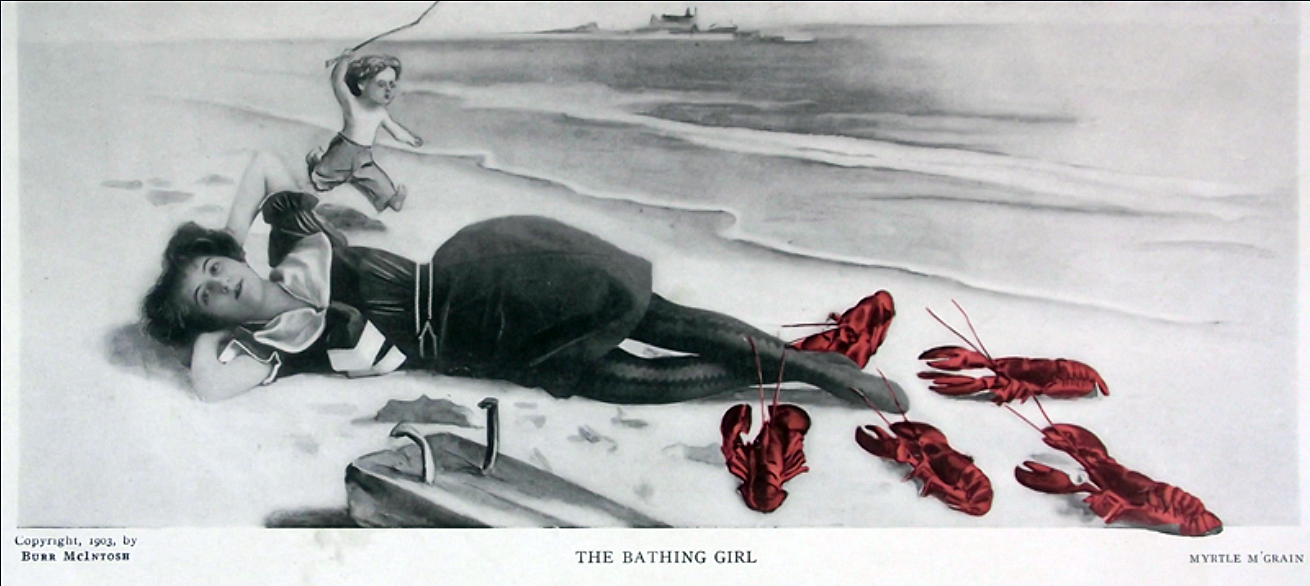Every so often, in a collection as large as that of The Mariners’ Museum, an item surprises you. You see something so strange or unique that you can’t help but fall down a research rabbit hole in a desperate attempt to figure out what exactly you are looking at.
Thanks to Erika Cosme, Content and Interpretation Developer and Lauren Furey, Manager of Visitor Engagement, such an item came to my attention.
The original catalog record was pretty sparse and didn’t offer many clues. Only the barest information about the size, a transcription of the text, and a guess that perhaps Myrtle M’Grain was the artist. If that were the case, however, then why would the copyright belong to Burr McIntosh? Was that the owner of a print shop? A periodical? Did they collaborate? Is this work-for-hire used to illustrate a point?
Who is Burr McIntosh?
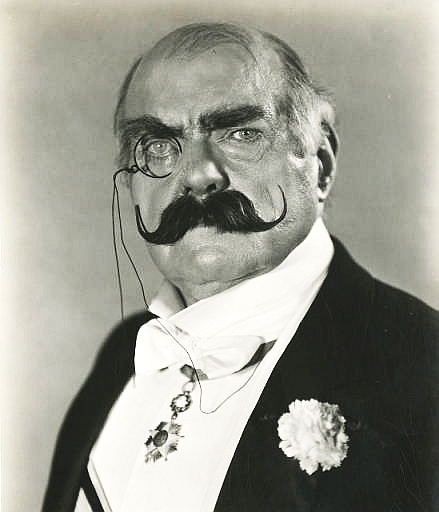
Burr was a bit of a jack of all trades. He was an actor of stage and screen, an author, a journalist, a photographer, a film studio owner, a pioneer of both film and radio, a professional level pool player, a publisher, and a lecturer. He was born William Burr McIntosh on August 21, 1862, in Wellsville, Ohio, to William A. McIntosh and Minerva née Bottenberg. His father was the president of the New York and Cleveland Gas Coal Company. Little is known of Burr’s early life until his college career, spanning Lafayette College in Easton, PA, and Princeton University in Princeton, NJ. He was a star athlete at the latter as the U.S. sprint champion and catcher on the varsity nine.
Early Career
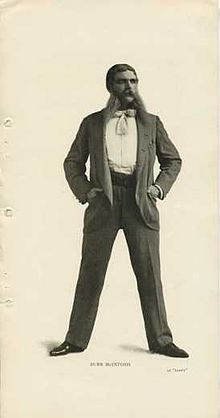
Burr McIntosh began acting in 1885 with a role in Bartley Campbell’s “Paquita” at the 14th Street Theatre in New York. He very quickly became a star and spent half of each season in London. His most notable stage performance was that of Talbot “Taffy” Wynne in the hit play “Trilby” at the Garden Theater in New York.
In the mid-late 1890s, Burr began his career as a photographer, working on assignment for Frank Leslie’s Weekly, an illustrated news and literary publication. He embedded in Cuba during the last major operation on the island of the Spanish-American War, the Siege of Santiago. Following his time in Cuba, McIntosh became famous as a lecturer, exhibiting his photos and discussing his time as a photojournalist. He stirred controversy during this time by publicly dismissing the courage of Colonel Theodore Roosevelt and the Rough Riders. The popularity of his photos of Cuba launched him further into his career as a photographer.
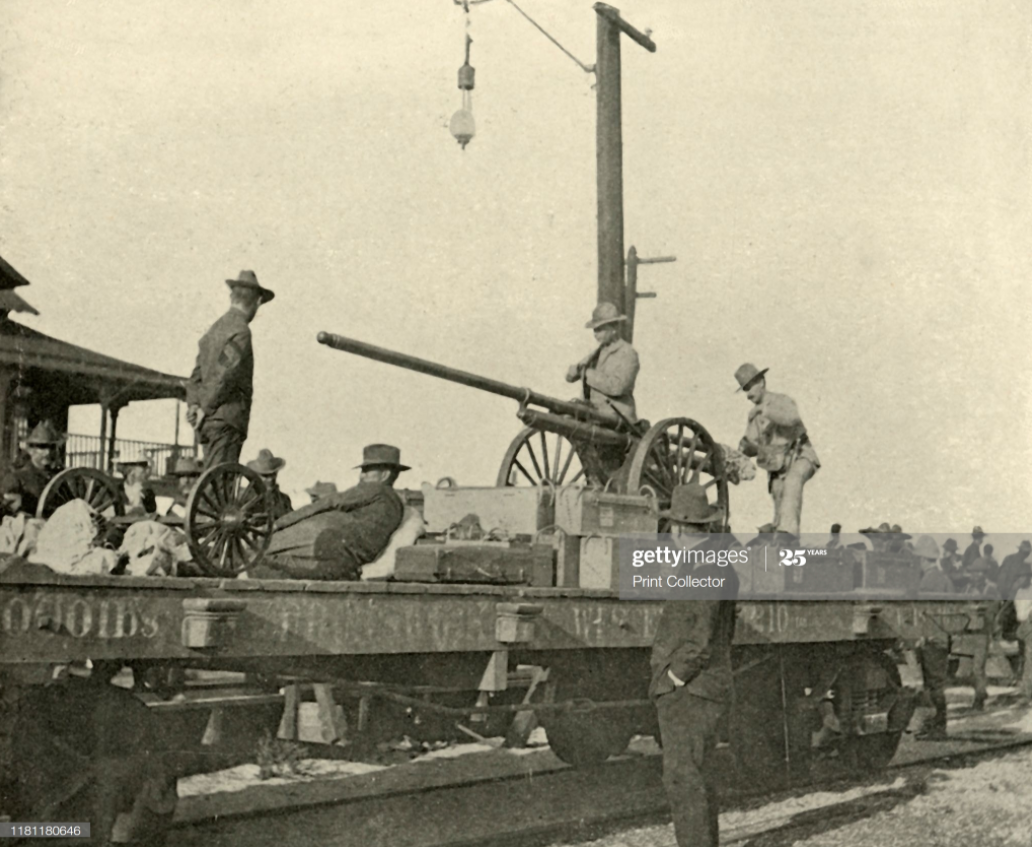
the Burr McIntosh Monthly
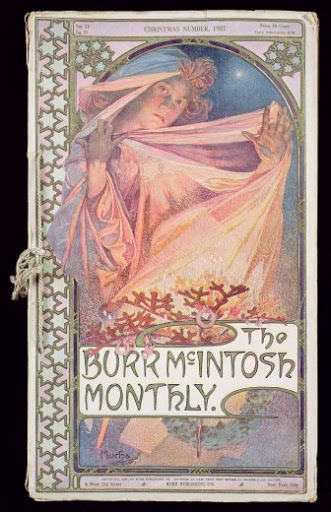
Late in 1902, Burr founded The Burr McIntosh Monthly, an illustrated periodical. Unlike Frank Leslie’s Weekly, however, the contents were less news and more lifestyle and celebrity-focused. Portraits ranged from actors to notable politicians to athletes and others. Burr also kept some of his photojournalism alive through documenting events. Burr’s artistry reflected the Art Nouveau movement of the era, and he became friends with the big names in the style. Alphonse Mucha (a Czech artist during the Art Nouveau period, best known for his highly stylized theatrical posters) collaborated on at least one cover for the magazine, and Tiffany & Co. ads made regular appearances in the periodical. The Burr McIntosh Monthly was bound in a way that subscribers could easily remove their favorite images for display. McIntosh also started selling framing and display options specifically designed for his pages, which were an unusual dimension.
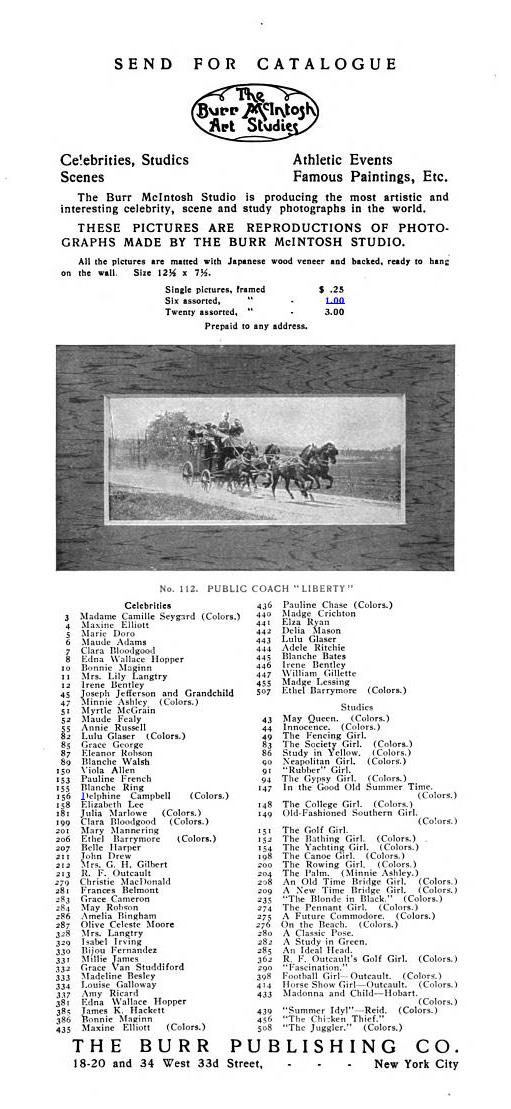
“The Bathing Girl” print from our collection featured in The Burr McIntosh Monthly in 1903. It proved to be so popular that it became part of a more extensive series that included “The Yachting Girl,” “The Canoeing Girl,” and others. After its initial release, magazine subscribers could place an order for prints that came pre-matted and ready to hang. The copies cost just $0.25 apiece (about $7.50 by today’s standards) and were encased in Japanese wood veneer.
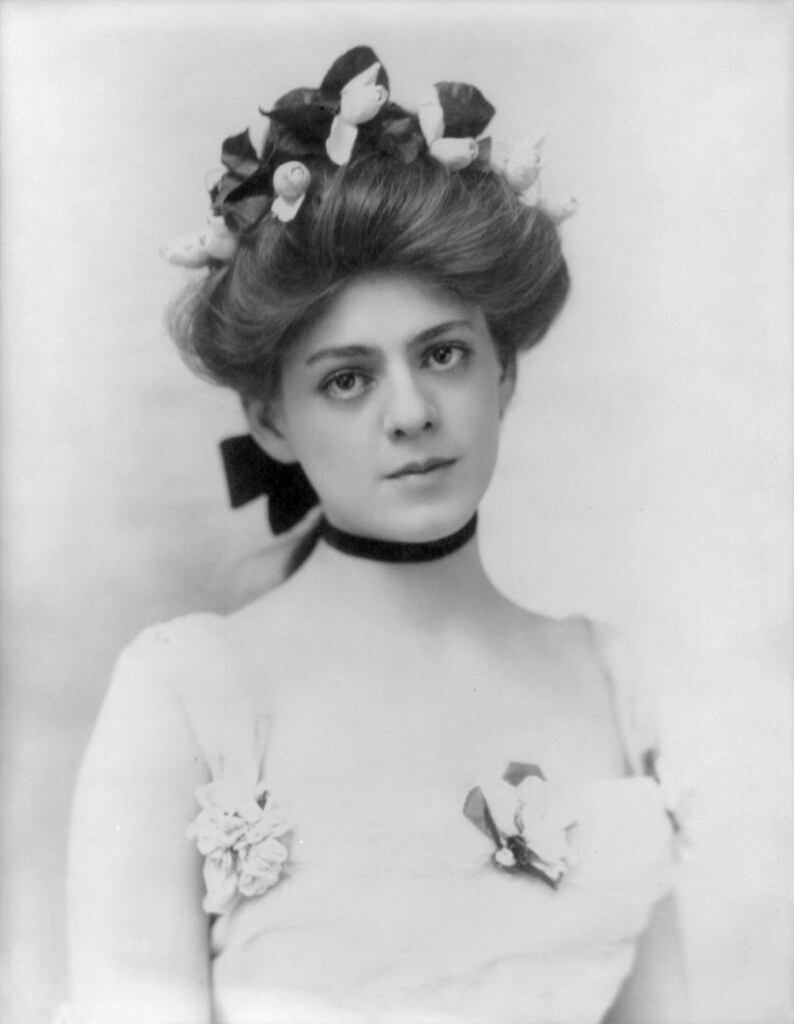
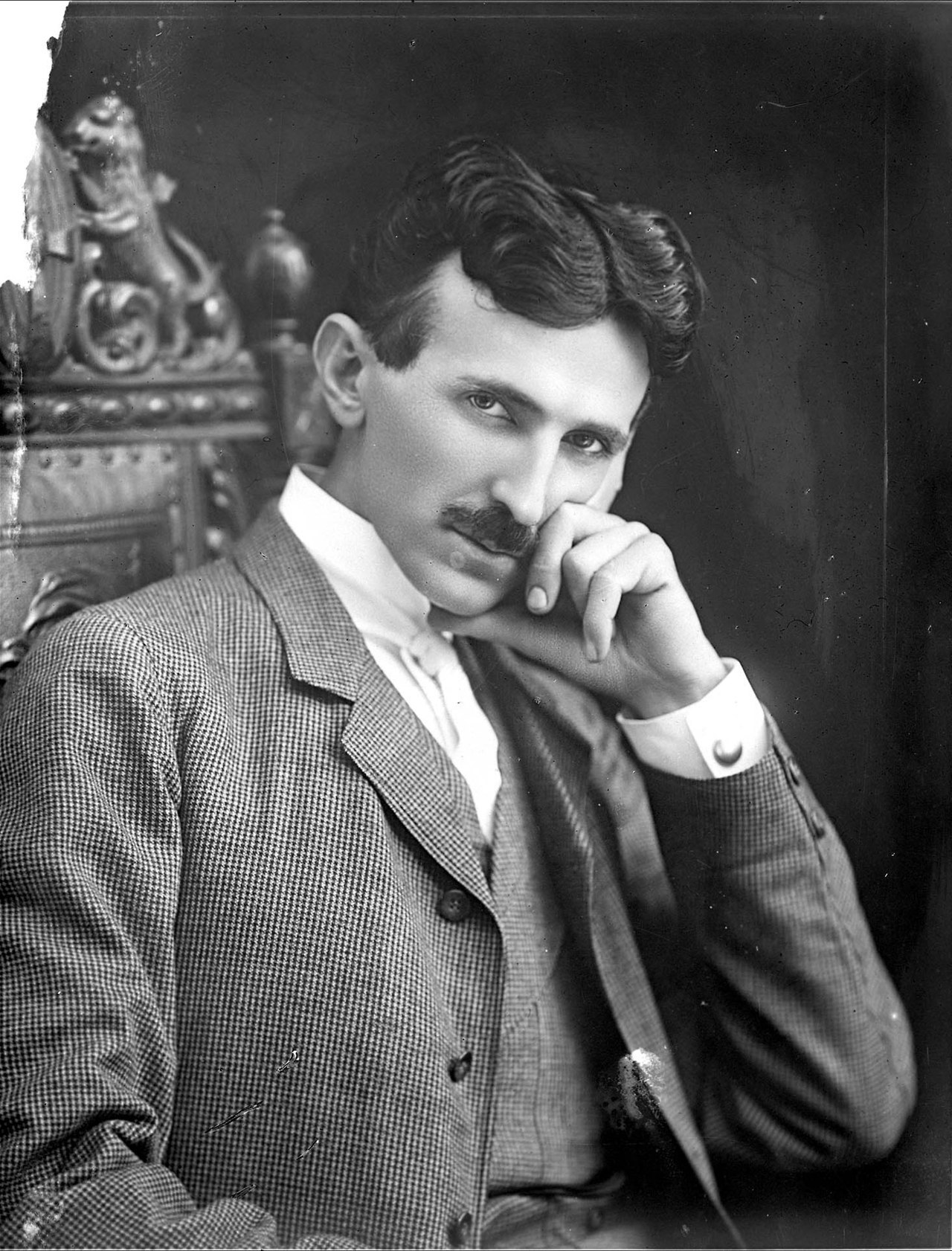
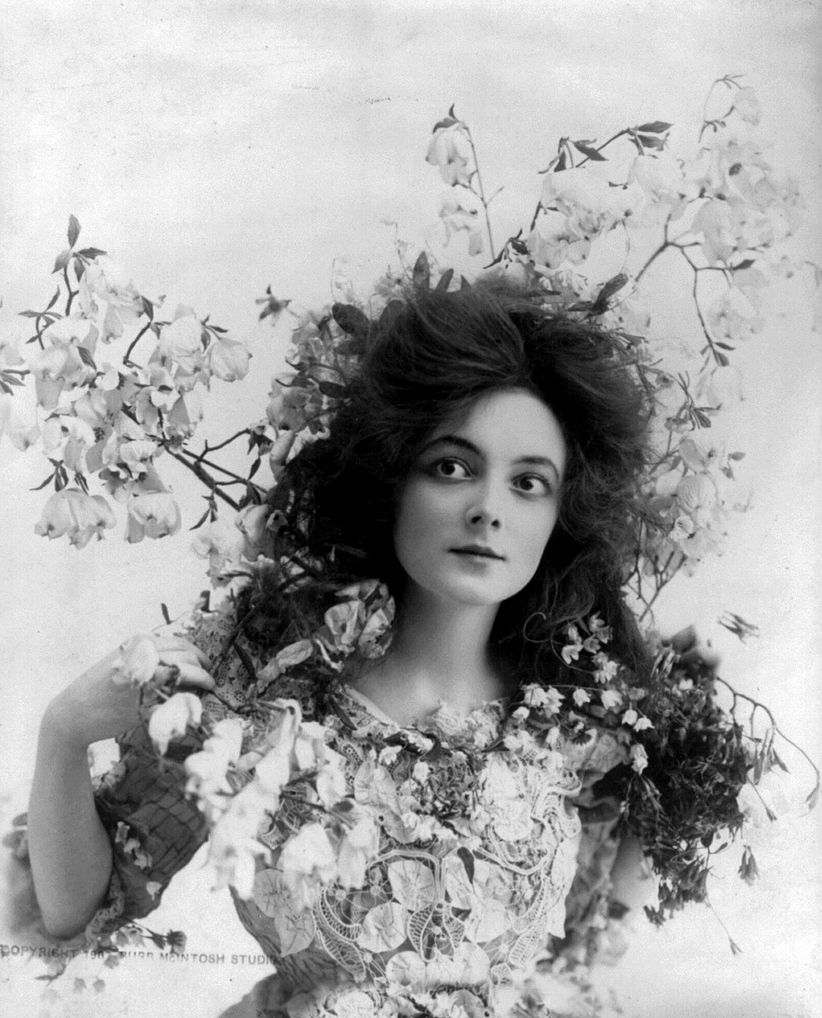
The Burr McIntosh Monthly continued production until 1910. Burr closed down his New York photo studio shortly after his financial backer, William Annis, was gunned down by a jealous husband but, that’s a story for another time. McIntosh then moved to California, where he established a film studio and artist colony and became a prominent actor in silent films. His career spanned 53 motion pictures. His most notable role being Squire Bartlett from D. W. Griffith’s “Way Down East.”
Later Career
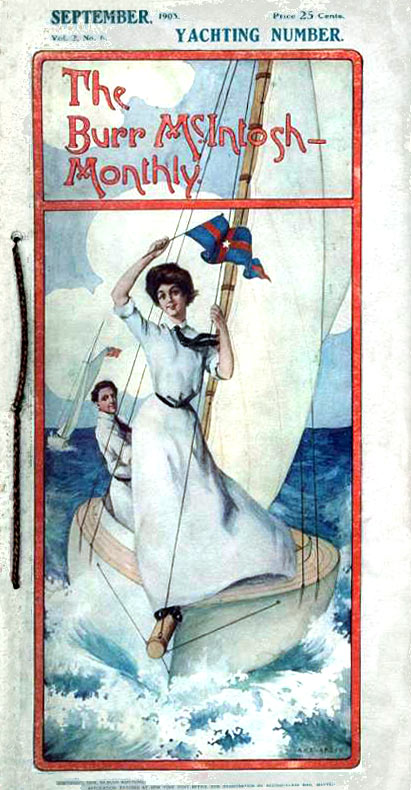
During WWI and later in the 1920s, McIntosh broadcast cheerful pep-talks to lift the spirits of the American public. He branded himself “The Cheerful Philosopher.” In August of 1923, he declared bankruptcy from “altruism.” Burr dedicated his remaining years to charitable works, especially collecting toys for needy families. He died of a heart attack in Hollywood on April 28, 1942, at the age of 79. His photographic collection is housed at the New York Historical Society.
Then, Who is Myrtle M’Grain?
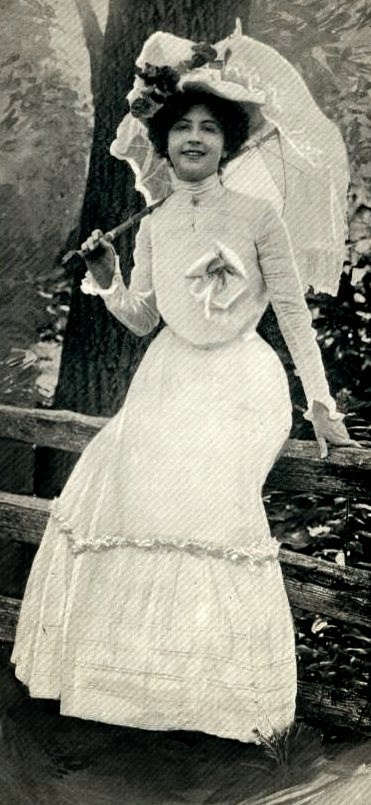
Myrtle proved slightly harder to track down, but it became quickly apparent that she is the titular “bathing girl” portrayed in the photograph. Myrtle McGrain (sometimes spelled M’Grain) was born on July 8, 1883, in Kentucky to Daniel G. McGrain and Delila E. Blume.
Very little information is available on Myrtle’s life. She left Kentucky to pursue acting on Broadway, where she enjoyed moderate success appearing in shows such as “Babes in Toyland” and “The Cingalee.” McGrain also found work as a model, appearing in several issues of The Burr McIntosh Monthly, including The Bathing Girl photograph. She was prominently featured in Burr’s “Beautify Your Home” series featuring celebrities, beautiful women, prominent figures in society, and events.
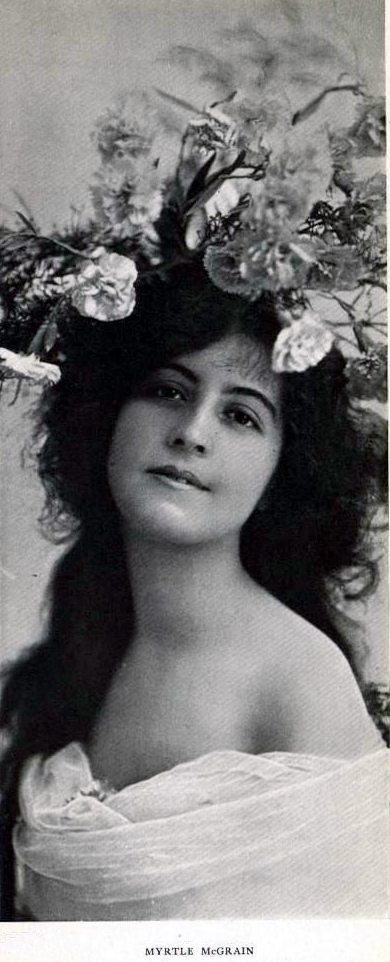
In 1915, Myrtle married World War I veteran, Lieutenant Colonel William J. Bacon. Bacon was a prominent attorney, judge, and state senator from Memphis, TN. Myrtle left the world of theater and became a well-known figure in Memphis society. Myrtle died on May 17, 1980, in Florida at the age of 96. She and William had no children.
A Collection of Stuff
Researching this item from our collection brought home a point for me once again. This strange little image, a piece of paper measuring 12×6 inches, could so quickly be passed over. It is easy to dismiss as good for a chuckle and little more. If you look deeper, though, beyond the easy to see, beyond the obvious (and the bright red lobsters), you find people. People who had lives and stories and friends and family.
That’s what this collection is all about. That’s what any museum should be about. As I like to say: this collection is just stuff, but it’s the stories — and the people — behind the “stuff” that make it important, impactful, and valuable. We have so much that we can still learn from what we’ve collected in 90 years of operation, and I think I speak for everyone at the Museum when I say we can’t wait to find more of these stories. Best of all, we can’t wait to share them with you!
